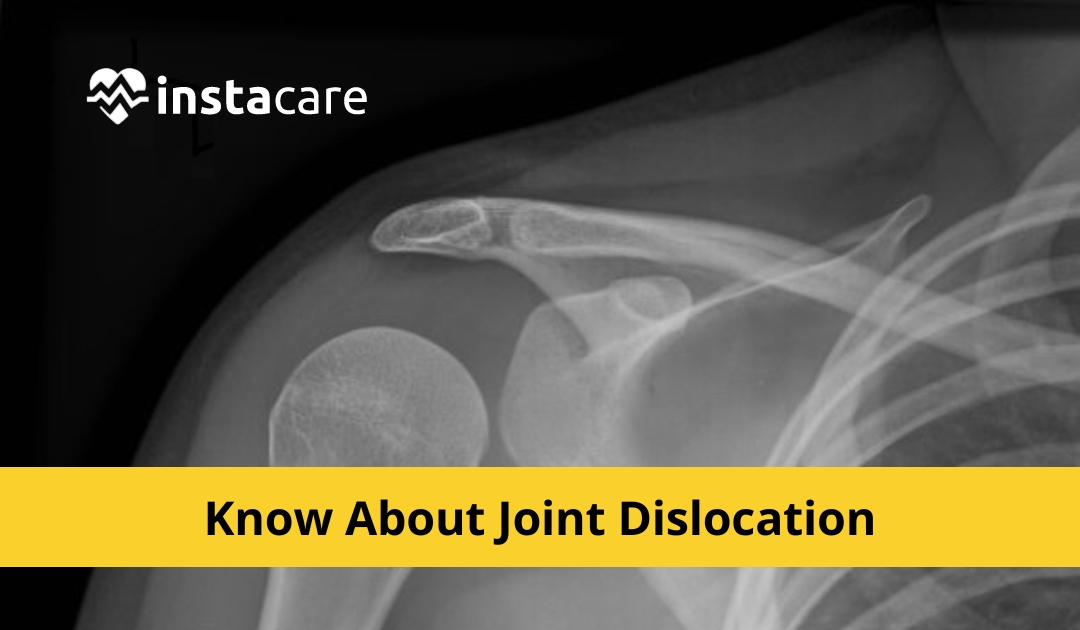Joint dislocation is a condition that occurs when the bones that form a joint are forced out of their normal position. If not treated promptly, this can cause immense pain, limited mobility, and even nerve and blood vessel damage. There are several types of joint dislocation; joint dislocation can cause significant pain, swelling, and mobility issues, requiring prompt medical attention to prevent further damage and complications. This blog will also discuss everything you need to know about joint dislocation.
Types of joint dislocation
1- Sternoclavicular joint dislocation
The sternoclavicular joint is the joint that connects the breastbone (sternum) to the collarbone (clavicle). A sternoclavicular joint dislocation occurs when the clavicle is forced out of its normal position about the sternum. This can happen because of a direct blow to the area, such as in a car accident or sports injury. It can also occur due to a sudden, forceful arm movement, such as when trying to catch a heavy object.
2- Sc joint dislocation
The sc joint, or acromioclavicular joint, is the joint that connects the shoulder blade (scapula) to the collarbone (clavicle). An sc joint dislocation occurs when the collarbone is forced out of its normal position about the scapula. This can happen due to a direct blow to the area, such as in a fall or sports injury.
3- Acromioclavicular joint dislocation
The acromioclavicular joint is the joint that connects the shoulder blade (scapula) to the collarbone (clavicle). An acromioclavicular joint dislocation occurs when the collarbone is forced out of its normal position at the scapula. This can happen due to a direct blow to the area, such as in a fall or sports injury.
View More: List Of Phobias - Causes Symptoms Types And Treatment
Causes of joint dislocation
Joint dislocations can occur in any joint in the body, but they are most common in the shoulder, elbow, finger, hip, knee, and ankle joints. Several factors can contribute to joint dislocation cause, including:
- Trauma: joint dislocations often occur as a result of a traumatic injury, such as a fall, sports injury, or car accident.
- Joint hypermobility: people with joint hypermobility are at a higher risk of dislocating their joints because their ligaments and tendons are more flexible.
- Age: our joints become more susceptible to injury and dislocation as we age.
- Genetics: some people may also have a genetic predisposition to joint dislocations.
Symptoms of joint dislocation
The symptoms of joint dislocation can also vary depending on the severity and also the location of the injury. However, some common symptoms of joint dislocation include the following:
- Pain: dislocated joints can be excruciating, and the pain may be sudden and severe.
- Swelling: dislocated joints often become swollen and bruised.
- Limited range of motion: dislocated joints may be difficult or impossible to move.
- Deformity: a dislocated joint may appear visibly deformed or out of place in some cases.
- Numbness or tingling: dislocated joints can sometimes cause numbness or tingling in the affected area.
Treatment options for joint dislocation
If you suspect you have dislocated a joint, it is essential to seek also medical attention immediately. Treatment methods may include: depending on the degree of the injury:
- Reduction: the first step also in treating a dislocated joint is to return the bones to their proper position. This is called reduction, and a trained medical professional typically does it.
- Immobilization: after the joint has been reduced, it may need to be immobilized for proper healing. This can be done with a splint, brace, or cast.
- Rehabilitation: once the joint has healed, rehabilitation exercises may be recommended to help restore strength and range of motion.
- Surgery: in some cases, surgery may be necessary to repair any damage to the joint or surrounding tissues.
View More: What Do You Need To Know About Bawaseer
Prevention of joint dislocation
While it is not always possible to prevent joint dislocations, there are some steps you can take to reduce your risk of injury, including:
- Strengthening exercises: strengthening the muscles around your joints can help support the joint and reduce the risk of injury.
- Proper technique: when participating in sports or other physical activities, use proper technique to avoid putting undue stress on your joints.
- Protective gear: when also participating in high-risk activities, such as contact sports or skateboarding, be sure to wear appropriate protective gear, such as also helmets, pads, and braces.
- Avoid overexertion: overexertion can increase the risk of injury, so take breaks and rest when needed.
Conclusion
Joint dislocations can be painful and debilitating injuries, but with proper treatment and rehabilitation, most people can fully recover. You also must seek medical attention immediately if you suspect a joint dislocation.
Please book an appointment with the Best General Physician in Lahore, Karachi, Islamabad, and all major cities of Pakistan through InstaCare, or call our helpline at 02137136090 to find a verified doctor for your disease.

